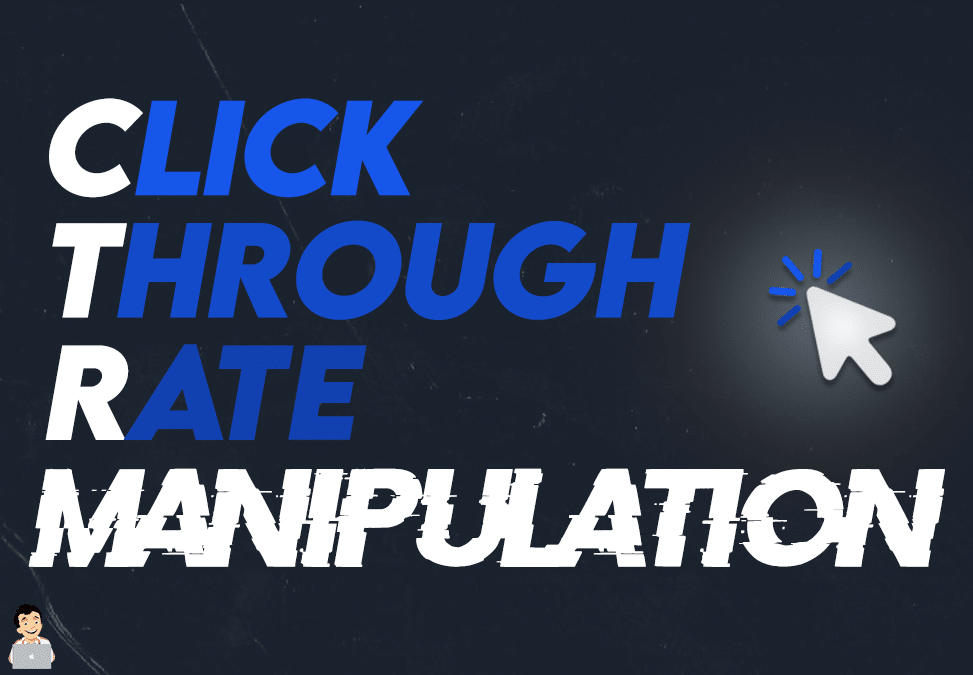Improve Search Results Page Utilizing CTR Manipulation Press Release
Improve Search Results Page Utilizing CTR Manipulation Press Release
Blog Article
Attaining Online Success Via Strategic CTR Manipulation
In the digital landscape, achieving on-line success significantly pivots on the nuanced art of calculated click-through rate (CTR) control. Exploring the fragile interaction of psychology, analytics, and innovative execution reveals a path to not just improve CTR but also grow enduring relationships with target markets.

Recognizing Click-Through Fees
Understanding the intricacies of click-through prices (CTR) is vital for online marketers aiming to maximize their digital projects. CTR, defined as the ratio of individuals who click a certain link to the variety of total customers who view a web page, ad, or e-mail, serves as a critical statistics in assessing the performance of on the internet marketing approaches. A higher CTR shows that the material reverberates well with the target audience, motivating interaction and communication.
To determine CTR, the formula is straightforward: split the variety of clicks by the number of impressions and multiply by 100 to share it as a portion. This dimension not only supplies understanding into the performance of advertisements however also exposes possibilities for improvement. By examining CTR, marketers can determine which components of their campaigns-- such as headlines, pictures, or call-to-action switches-- are most reliable in driving clicks.
Furthermore, comprehending sector standards for CTR is important, as they can vary dramatically across different markets. By continually checking and adjusting techniques based on CTR information, marketing experts can improve their campaigns, enhance user engagement, and eventually drive conversions, consequently adding to the total success of their electronic marketing efforts.
The Psychology of Online Actions
The efficiency of digital marketing approaches mainly pivots on the mental triggers that influence online actions. Comprehending these triggers is necessary for crafting compelling content that reverberates with users and drives involvement. Secret mental principles, such as social proof, deficiency, and seriousness, play a substantial function fit customers' choices.
Social evidence, as an example, leverages the tendency of people to seek to others for assistance, making testimonials and customer evaluations powerful devices in persuading possible customers. Deficiency strategies, which develop an understanding of limited schedule, can compel customers to act rapidly, fearing they could lose out on a possibility. Likewise, necessity instills a feeling of immediacy, prompting customers to make quicker decisions and minimizing the likelihood of procrastination.
Moreover, the cognitive prejudices that affect on-line actions, such as anchoring and loss aversion, can be harnessed to improve marketing efforts. By strategically placing information and emphasizing potential losses over gains, marketers can considerably influence consumer options. In a significantly competitive digital landscape, understanding the intricacies of online actions psychology is important for accomplishing sustained success and maximizing click-through rates.
Techniques for Improving CTR
Improving click-through rates (CTR) is vital for optimizing the efficiency of digital marketing campaigns. Including numbers, inquiries, or psychological read what he said triggers can considerably enhance engagement.
Another effective approach is leveraging high-grade visuals. Involving pictures or videos can draw customers in, making them most likely to click on the web link. In addition, using A/B testing permits marketing experts to trying out different content layouts, figuring out which versions yield the highest possible CTR.
Strategically putting calls-to-action (CTAs) within your content is additionally vital. CTAs ought to be clear, persuasive, and located prominently to lead individuals towards the preferred action. In addition, individualizing material based upon individual behavior and choices can create an extra relevant experience, raising the possibility of clicks.
Lastly, making certain that landing web pages are optimized for mobile tools is vital, as a considerable section of web traffic currently comes from mobile phones. A smooth individual experience throughout all devices can significantly boost CTR and drive far better outcomes for digital advertising efforts. By applying these techniques, marketing professionals can properly improve their click-through prices.
Measuring and Assessing Your CTR
Measuring and evaluating click-through prices (CTR) is a critical component of assessing the success of digital advertising visit the site and marketing projects. CTR, specified as the proportion of users who click on a particular web link to the overall variety of customers that watch the web page, functions as a vital efficiency indication. A comprehensive analysis begins with the aggregation of CTR data across various channels, including email, social media, and paid advertisements.

In addition, tracking patterns in time is necessary. A constant increase in CTR might suggest efficient strategies, while a decrease can signify the requirement for instant adjustments. Relative evaluation with market benchmarks better contextualizes efficiency, offering insights into essential enhancements.
Ultimately, gauging and examining CTR not only educates calculated decision-making but additionally promotes a society of constant improvement in advertising and marketing efforts, making certain that campaigns effectively get to and resonate with target market. CTR Manipulation.
Honest Factors To Consider in CTR Control
As electronic advertising and marketing increasingly counts on click-through rates (CTR) to determine efficiency, moral considerations bordering CTR manipulation have actually come to the leading edge. While maximizing CTR via tactical approaches can enhance exposure and involvement, it is important to analyze the implications of such methods.
Adjusting CTR through deceptive methods, such as clickbait headlines or deceitful advertisements, can wear down customer depend on and damages brand name online reputation. These techniques may produce temporary gains but typically cause long-term consequences, including client reaction and regulatory scrutiny (CTR Manipulation). Honest advertising stresses openness, motivating businesses to present precise info that straightens with customer assumptions
Furthermore, the rise of man-made knowledge and automated click generation provides extra honest obstacles. Using crawlers or various other automated systems to blow up CTR threatens the honesty of efficiency metrics browse around here and alters advertising and marketing information, making complex decision-making procedures.
Eventually, marketers must balance the search of greater CTR with moral criteria that focus on sincerity and consumer welfare. By fostering genuine involvement and giving worth to individuals, brands can accomplish sustainable success while upholding moral advertising and marketing concepts. In navigating these considerations, businesses will certainly not just secure their track record however also grow a devoted client base.
Conclusion
In recap, achieving on-line success through calculated CTR manipulation needs a multifaceted approach that stabilizes optimization methods with ethical considerations. Inevitably, a commitment to ethical requirements in CTR strategies not only enhances performance however additionally cultivates long-term relationships with audiences.
Report this page